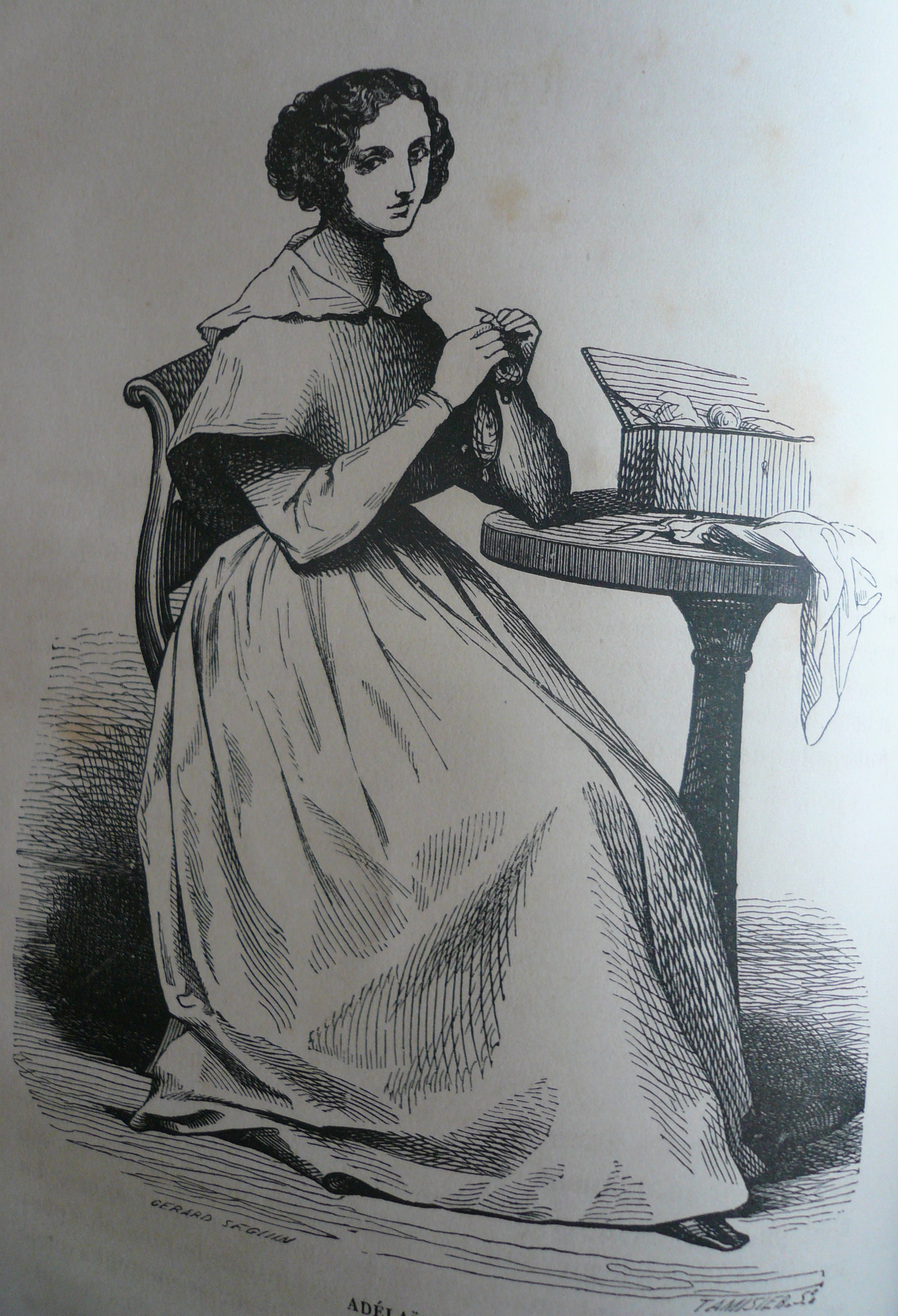
The Purse
THE HUMAN COMEDY – Honoré de Balzac First volume of works of Honoré de Balzac edited by widow André Houssiaux, publisher, Hebert and Co, successors, 7 rue Perronet – Paris (1877)
Scenes from private life 
THE PURSE
A SOFKA Haven’t you noticed, mademoiselle, that by placing two figures in adoration at the side of a beautiful saint, the painters and sculptors of the Middle Ages never failed to impress upon them a filial resemblance? when you see your name among those who are dear to me and under whose protection I place my works, remember this touching harmony, and you will find here not so much a tribute as an expression of the fraternal affection vowed to you. Your servant, De Balzac.
La Bourse is a novel by Honoré de Balzac, published in 1832 by Mame-Delaunay in Scènes de la vie privée de la Comédie Humaine. Republished by Béchet in 1835, and again in 1839 by Charpentier in Scènes de la vie parisienne, the text found its way back into Scènes de la vie privée, in Volume III of the 1842 Furne edition.
History This is the story of the love affair between a young girl of modest means, Adélaïde Monseigneur, and a young painter, Hippolyte Schinner, who went on to become the genius we know today. They live in the same building. Adélaïde is the daughter of an old, penniless, widowed baroness. Hippolyte Schinner believes his love has been compromised by doubts about his neighbors’ honesty. He thinks Adélaïde has stolen his purse during one of the evenings the Baroness spends playing cards with her friends. He’ll be ashamed of his prejudices and unhealthy assumptions when Adélaïde hands him a brand-new purse she’s made herself, with not a penny missing. The story ends with a happy marriage between the two protagonists.

Adélaïde

H. Schinner
Genealogy of characters Baron Leseigneur de Rouville: Leseigneur de Rouville, baron and ship’s captain – died circa 1796. Father of Adélaïde, he left his wife and daughter destitute on his death. Adélaïde married Hippolyte Schinner. Adélaïde Leseigneur de Rouville: Daughter of the above, she does her best to hide the atrocious poverty in which her worthy family lives. Madame Schinner: An Alsatian, Mademoiselle Schinner had a natural son born in 1790, Hippolyte Schinner, a painter who was made a baron. Married Adélaïde Leseigneur de Rouville. Hippolyte Schinner: A poor painter who finds someone poorer than he is, and is discovered to be Baron de Schinner at the end. Chevalier du Halga: Friend of Baroness de Rouville. Comte de Kergarouët (admiral): Another friend of the Baroness de Rouville, where he and the Chevalier make it a point to come and lose at gambling to help the two women without their noticing.
Balzac and art Here, the author deals with a subject he will cover in several works: the arts, creation in all its forms, and the joys and pains it provokes. A great admirer of Eugène Delacroix, who is said to have modelled for him the character of Joseph Bridau (painter in La Rabouilleuse (A Boy’s Household), Un Début dans la vie (A Beginning in Life), La Bourse (The Stock Exchange)), it shows pictorial creation from all angles: that of the innovative and misunderstood painter, the genial Frenhorfer of the Unknown masterpieceJoseph Bridau, the painter who was just starting out and was later recognized, and the rich but crusty painter: Pierre Grassouwho wastes his life copying Titian, Raphael (painter), Rembrandt and Rubens, and remains bitter despite his wealth and social position. Balzac never fails to “illustrate” his novels with references to famous paintings. The Bourse is punctuated by these pictorial descriptions: “Adélaïde leaned her elbows on the back of the armchair occupied by the old gentleman, unknowingly imitating the pose Guerin gave Dido’s sister in his famous painting.” He also brilliantly returns to the themes that are dear to him and that punctuate the Comédie Humaine of novels, short stories and tales dealing with a meticulousness and precision that still astonish specialists: – sculpture: Sarrasine, whose hero Sarrasine is a rebellious genius. – music: Gambara, in which we witness the quasi-mathematical creation of a musical work, and in which Balzac also gives a meticulous analysis of an opera by Giacomo Meyerbeer. – lyrical art: Massimilla Doni, where the love story serves as a pretext for a veritable lesson in Rossini’s art. Balzac presents another fine fable in La Bourse. “Balzac is a great storyteller and fabulist, forging in a short novel a portrait of a social category to which he often returned: the forgotten (victims?) of Napoleon, as we’ve already seen in La Rabouilleuse. Although considered a secondary work, the book contributes to illuminating the world of painting in a rather unexpected way. It also refers to other works on the same theme and to “l’intelligence de l’art chez Balzac”. In this respect, he is a significant addition to the Comédie Humaine edifice.
1) Source story taken from the preface (Volume I) compiled from the full text of the Comédie Humaine published by France Loisirs 1986 under the auspices of the Société des Amis d’Honoré de Balzac.
2) Character genealogy source: Félicien Marceau “Balzac et son monde – Gallimard” (Balzac and his world – Gallimard)
3) Additional notes: Universal encyclopedia Wikipedia.
No Comments